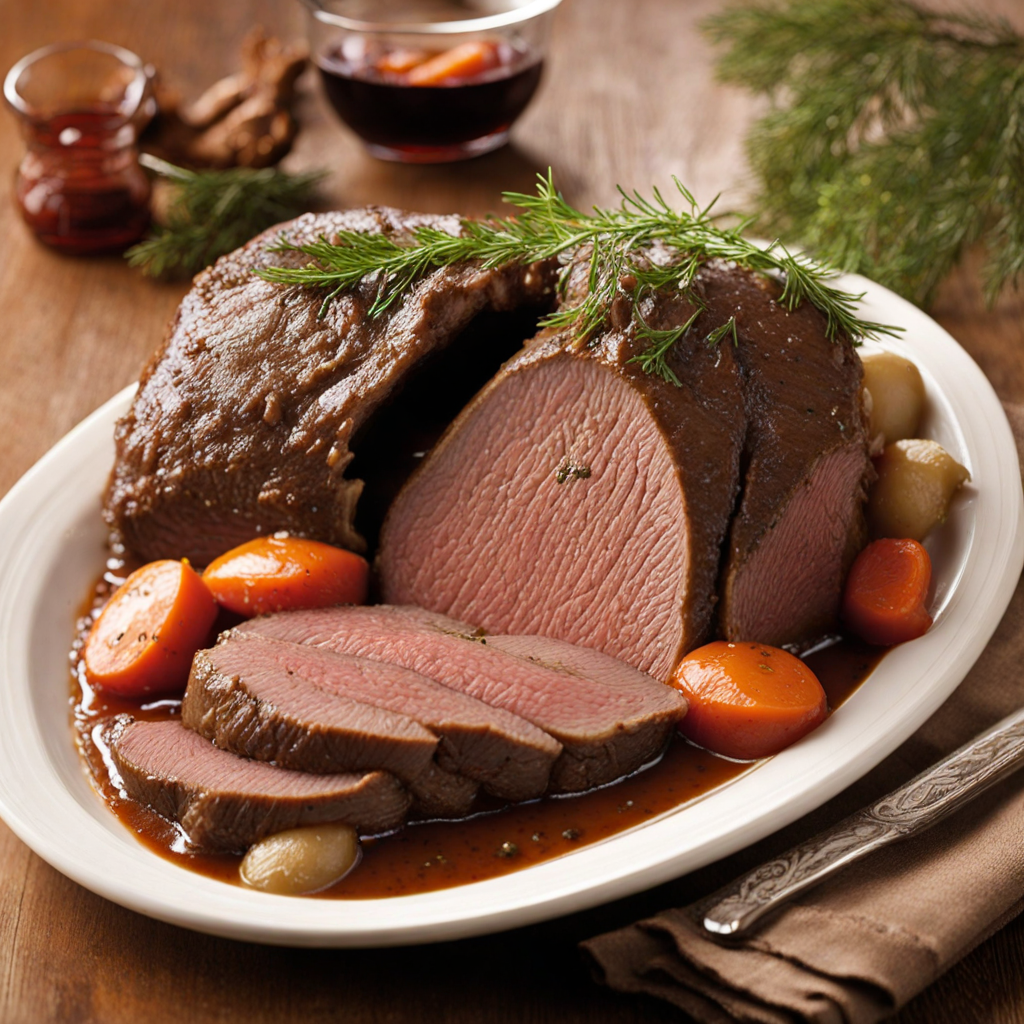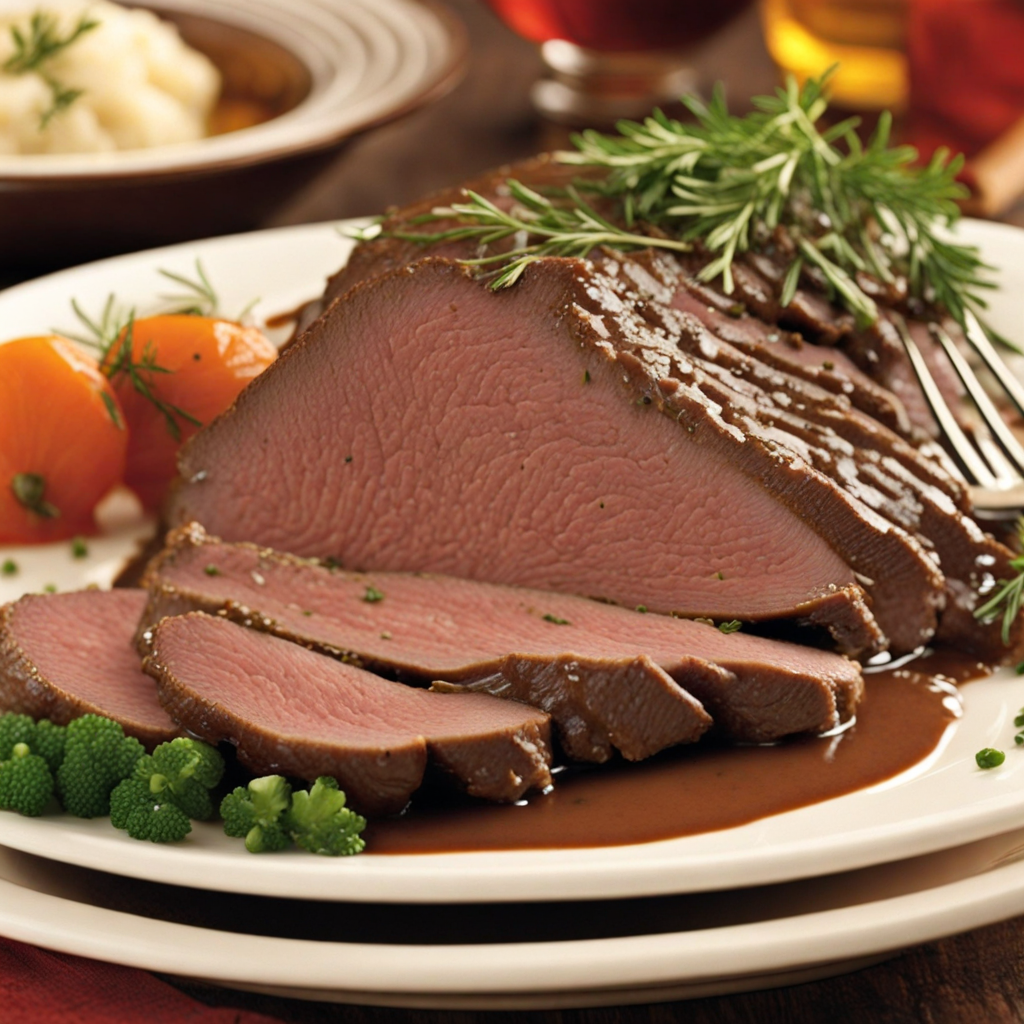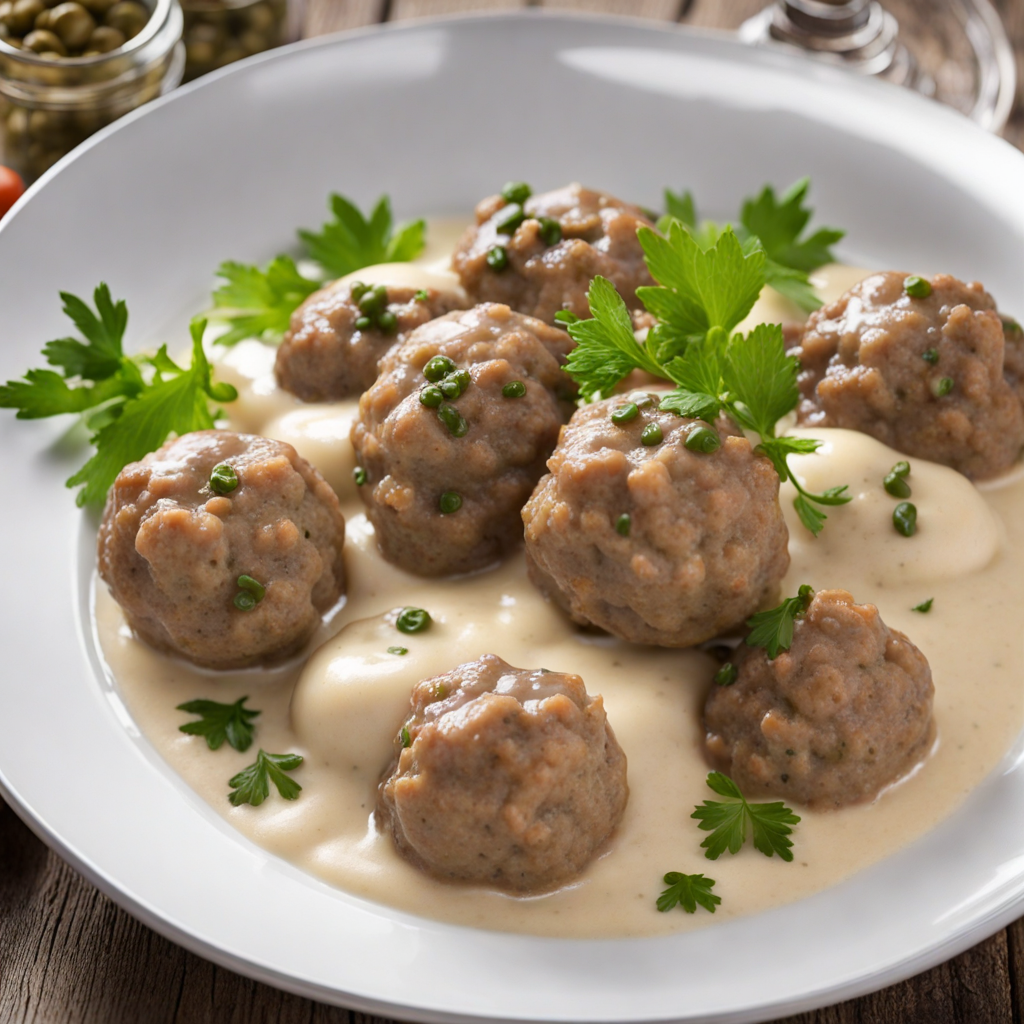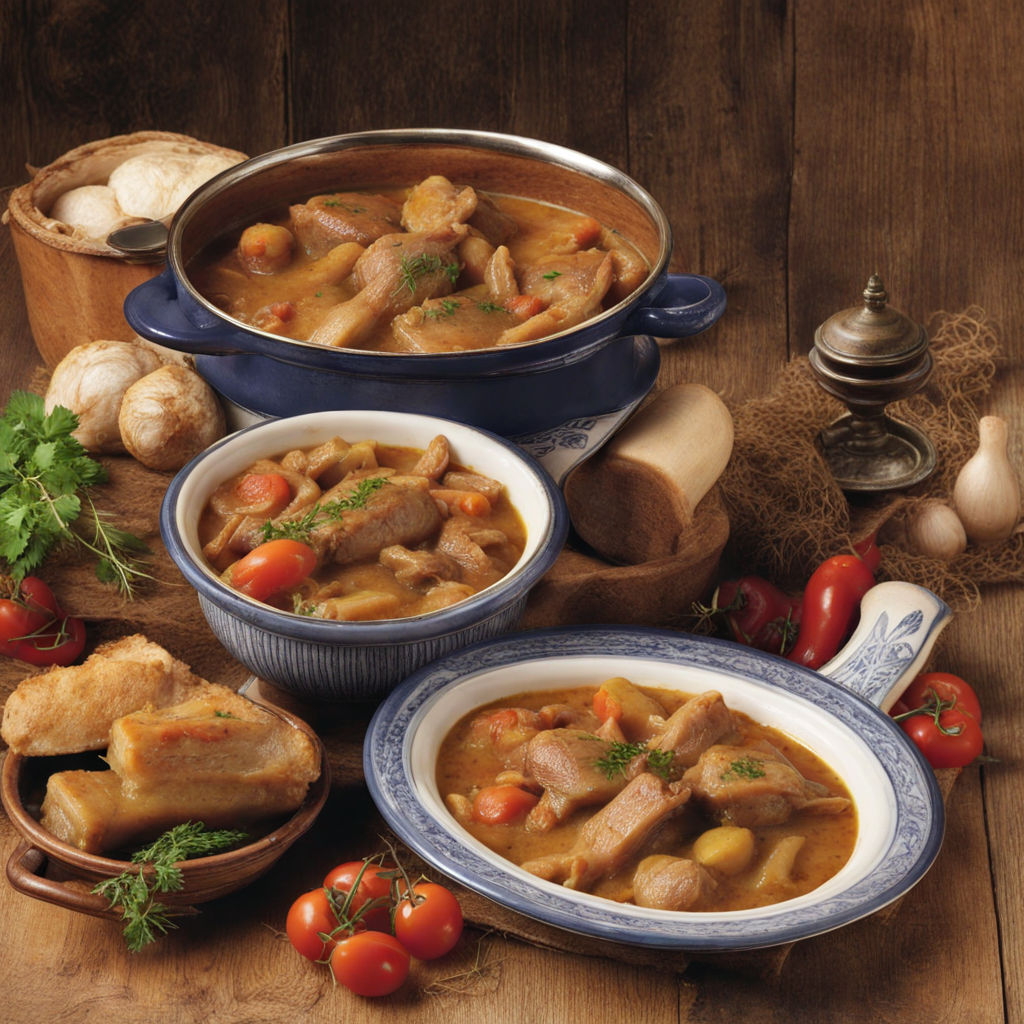Sauerbraten
Sauerbraten is a traditional German pot roast that embodies the rich culinary heritage of the country. The dish is typically made from tougher cuts of beef, such as chuck or round, which are marinated for several days in a mixture of vinegar, water, and various spices like bay leaves, cloves, and peppercorns. This marination process not only tenderizes the meat but also infuses it with a unique tangy flavor profile that sets Sauerbraten apart from other roasts. The balance of acidity and spices creates a depth of flavor that is both savory and slightly sweet, often enhanced with the addition of sugar or raisins during cooking. Sauerbraten is usually slow-cooked to perfection, allowing the meat to absorb the flavors of the marinade while becoming meltingly tender. As it cooks, the roast releases its juices, which meld with the marinade to create a rich gravy. This gravy is often thickened with gingerbread cookies or a similar sweet component, adding a delightful complexity to the dish. The result is a hearty meal that is often served with traditional sides like red cabbage, potato dumplings, or boiled potatoes, making for a comforting and satisfying dining experience. This dish is not only a staple in German households but also a beloved feature at festive gatherings and celebrations. Each region in Germany may have its own variation of Sauerbraten, with slight differences in the marinade ingredients and cooking methods, reflecting local tastes and traditions. The experience of savoring Sauerbraten is truly a journey through Germany's culinary landscape, showcasing how simple ingredients can come together to create an unforgettable dish that is both historical and delicious.
How It Became This Dish
The History of Sauerbraten: A Culinary Journey Through Germany Sauerbraten, often considered the quintessential German pot roast, is a dish steeped in history and tradition. Its name translates to "sour roast," which aptly describes the primary method of preparation that involves marinating the meat in a mixture of vinegar, water, and various spices. This dish embodies the essence of German cooking: hearty, robust, and deeply rooted in local customs. #### Origins: A Dish of Necessity The origins of Sauerbraten can be traced back to the Middle Ages, when preservation and flavor enhancement were critical in the absence of modern refrigeration. In a time when meat was often salted or smoked to extend its shelf life, vinegar emerged as a vital ingredient for both preservation and flavoring. The word "sauer," meaning sour in German, indicates the key technique of marinating, which tenderizes tougher cuts of meat and adds a distinctive tang. The choice of meat varied by region, but beef was the most commonly used. The practice of marinating meat in vinegar before cooking likely evolved as a way to make older or tougher cuts more palatable, a reflection of peasant cooking that relied on resourcefulness and creativity. #### Cultural Significance: A Taste of Tradition Sauerbraten is much more than just a dish; it is a cultural emblem of German culinary heritage. It holds a special place in the hearts of many Germans and is often served during festive occasions and family gatherings. Traditionally, Sauerbraten is associated with Sunday dinners and holiday feasts, symbolizing comfort and familial bonds. Regional variations of Sauerbraten exist, with each area of Germany putting its own twist on the classic recipe. For instance, in the Rhineland, the dish is typically sweetened with sugar or raisins, while in Bavaria, it may be flavored with herbs like bay leaves and juniper berries. These variations highlight the diverse culinary landscape of Germany, where local ingredients and cultural influences converge. #### Development Through Time: From Peasant Fare to Gourmet Delight As Germany transitioned through various historical epochs, so too did the culinary landscape. The 19th century marked a significant turning point for Sauerbraten. With the rise of the bourgeoisie and the establishment of a formal dining culture, traditional peasant dishes began to gain recognition in upper-class households. Sauerbraten, once a simple meal for laborers, transformed into a dish worthy of fine dining. During this time, cookbooks became increasingly popular, and recipes for Sauerbraten began to appear in texts aimed at the burgeoning middle class. The dish was often served with red cabbage and potato dumplings, a pairing that has become standard in many German households today. This period also saw the emergence of regional specialties, as variations were adopted and adapted by different communities. The late 19th and early 20th centuries brought about further changes. As German immigrants spread across the globe, particularly to the United States, they carried their culinary traditions with them. Sauerbraten found a new audience, and while the basic concept remained, adaptations were made to suit local tastes and available ingredients. In America, for example, some recipes began to incorporate more sugar or even soda to counterbalance the acidity of the vinegar. #### Sauerbraten in the Modern Era: A Culinary Renaissance In the late 20th and early 21st centuries, there has been a resurgence of interest in traditional German cuisine, both in Germany and abroad. This revival is often linked to a broader movement toward sustainable and local food practices, where people are seeking to reconnect with their culinary roots. Sauerbraten, with its rich history and comforting flavors, has found itself at the forefront of this culinary renaissance. Modern chefs are experimenting with the dish, often incorporating contemporary techniques and ingredients while still respecting traditional methods. Some chefs are exploring alternative marinades, using local wines or craft beers instead of vinegar, while others experiment with sous-vide cooking to achieve the perfect tenderness. The balance of tradition and innovation reflects a growing appreciation for culinary heritage and the stories behind each dish. In Germany today, Sauerbraten is still a beloved staple, often enjoyed at family gatherings and special occasions. Restaurants across the country proudly feature their own versions, showcasing local variations that celebrate regional ingredients and flavors. Whether it's served in a rustic Gasthaus or a Michelin-starred restaurant, Sauerbraten continues to evoke nostalgia and warmth, bridging generations and regions. #### Conclusion: More Than Just a Meal Sauerbraten represents more than just a dish; it is a symbol of German identity, culture, and history. From its humble beginnings as a peasant meal to its status as a cherished culinary classic, Sauerbraten has woven itself into the fabric of German life. Its preparation reflects an understanding of the land and its resources, as well as a deep respect for tradition. As we savor a plate of Sauerbraten today, we partake in a rich narrative that spans centuries. Each bite tells a story of resilience, community, and a love for food that transcends borders. Whether enjoyed in a cozy home or a bustling restaurant, Sauerbraten remains a testament to the enduring power of culinary heritage – a delicious reminder that the past is always present on our plates.
You may like
Discover local flavors from Germany







